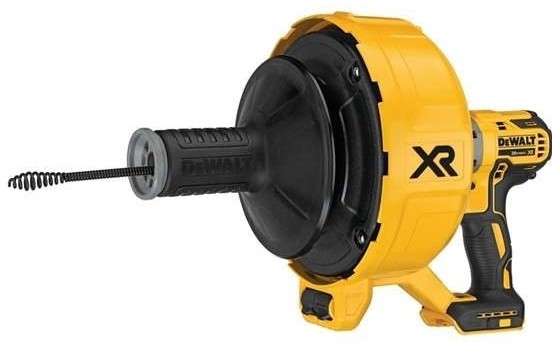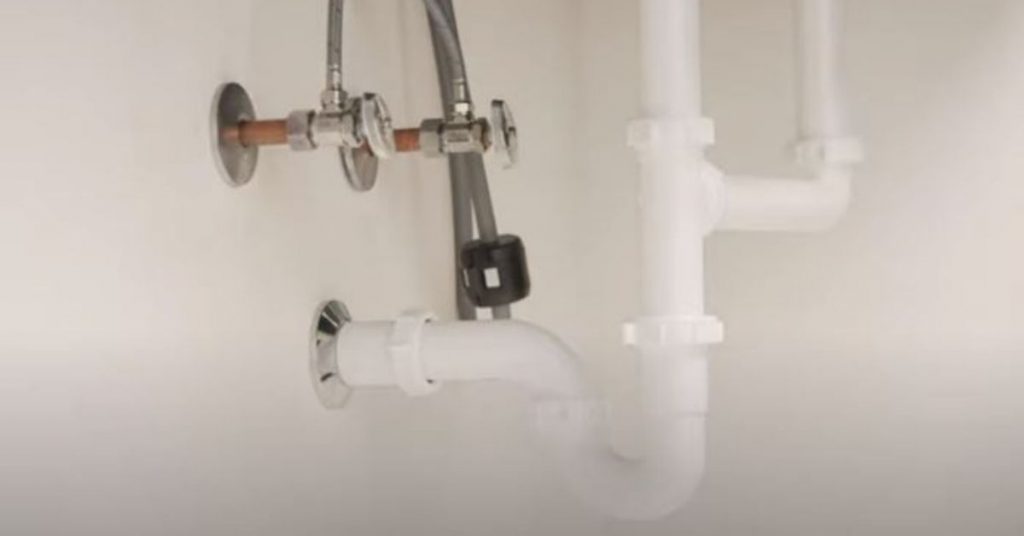A gurgling kitchen/bathroom sink is caused by a vacuum in the drainpipe, as a result of a clogged vent, lack of venting, poor venting or a clogged drain which suck water from the P-trap and hence the gurgling. It could also happen if you have an S-trap instead of a P-trap.

Causes Of a Gurgling Sink
- Blocked Drain: One common cause of a gurgling sink is a blocked or partially clogged drain. This can occur due to the accumulation of hair, soap scum, food particles, or debris in the pipes.
- Venting Issues: Plumbing systems are designed with vent pipes to allow air to flow and prevent water from creating a vacuum in the drain. If these vents become blocked or restricted, it can lead to gurgling sounds as water drains.
- Improper Ventilation: In some cases, a sink may not have been properly vented during installation, leading to negative pressure in the drain and gurgling sounds.
Solutions
- Clear the Blockage: If the gurgling is due to a clogged drain, use a plunger or a drain snake to clear the blockage. Regularly cleaning sink drains can prevent future gurgling issues.
- Check Vent Pipes: Inspect the vent pipes on your roof or exterior walls. If they are obstructed by debris, leaves, or birds’ nests, clear them to restore proper ventilation.
- Run Water: Pour hot water down the sink drain followed by baking soda and vinegar. This can help dissolve grease and clear minor clogs. Follow it with more hot water to flush out the debris.
- Use a Drain Cleaner: Consider using a chemical drain cleaner if the blockage is stubborn. Follow the manufacturer’s instructions and take safety precautions.
- Professional Inspection: If the gurgling persists despite your efforts, or if you suspect venting issues, it’s advisable to consult a professional plumber. They can diagnose the problem accurately and make necessary repairs or adjustments to the plumbing system.
- Install an Anti-Siphon Device: If you live in an area prone to plumbing system siphoning, consider installing an anti-siphon device. This prevents negative pressure and gurgling sounds by allowing air to enter the drain system without letting sewer gases escape.
Sink Gurgling When Toilet Is Flushed
This usually affects the bathroom sink. The bathroom sink, toilet tub and shower share the same plumbing vent. This is called wet venting.
All their separate drainpipes are connected to the main house drainpipe and then a plumbing vent is connected from the main drainpipe and runs vertically through the roof of the house. This vent brings in air and also helps to expel sewer gases.
If your bathroom sink is gurgling when you flush the toilet, you are dealing with a blocked vent stack or a clogged drainpipe. As the toilet drains, a vacuum is created in the drainpipe which sucks water from the sink’s P-trap and hence the gurgling.
Although most people will rush to unclog the vent stack, you will be surprised by how often the culprit is a clogged drainpipe. With a clogged drainpipe, the water from the toilet bowl will fill the pipe as it drains, meaning there is no way for air to come in.
This is the same thing you will experience when you have a clogged vent. The 1.5 gallons of water from the toilet completely fills and drags with it the air already in the drainpipe.
When that happens, you want air to come in through the vent to avoid a vacuum from being created. If the vent is clogged, a vacuum is created and the drainpipe needs to draw in air from elsewhere.
In this case the sink drain is the only place. Since you have water in the sink’s P-trap already, the water will be siphoned inside the drainpipe as air is being drawn in. It is the siphoning of the water from the P-trap that creates the gurgle. Same as when you flush a toilet.
Apart from the above you may also experience a toilet that gurgles while you are taking a shower. For more information on that check out this post.
How to Fix the Gurgling Sink
The 2 best ways to fix a sink that gurgles when you flush the toilet is by unclogging the drain or the vent stack. Let us go through each one of them.
1. Unclog the Drain

In this case, it does not matter if you unclog the drainpipe from the toilet, sink or tub/shower drain. This is because the clog is in the main drainpipe and whichever method you choose will land you there.
I must however say that if you decide to use a plunger, do it from the toilet and I will tell you why below. With a drain snake I would either approach it from the bathtub/shower drain or the toilet. Alternatively, I would remove the sinks P-trap and feed the snake through the drain directly.
A toilet plunger can and will dislodge light clogs from the drainpipe. If however the clogs are really stubborn you will need to upgrade to a drain snake. Be sure to get a proper drain snake and not a toilet auger.
While plunging the toilet, seal off the other fixtures drains using duct tape, without forgetting the overflow drains. Failure to seal off the drains means that the pressure generated by the plunger will be lost through those drains.
After aggressive plunging, flush the toilet and check if the gurgle is gone. If the gurgling persists, get yourself a drain snake. The snake can reach the exact location of the clog and break it down.
The danger in using a drain snake is that if you are not very experienced with it you may damage the plumbing, causing even more expensive repairs. If you don’t feel comfortable doing it contact a plumber.
Plumbers are however not cheap and you will need to part with upwards of $100. The cost will be even more if they have to put a camera in your drains.
2. Unclog the Plumbing Vent
Before you call in a plumber, climb to the roof of your house and check if the vent is clogged. Usually, a vent should have a protective screen at the top to prevent debris from getting it and clogging it.
A good tool to use to unclog a vent is a garden hose. Stick it inside the vent and use it to probe and get through the clog. You can also ask someone on the ground to turn on the water to the garden hose.
The weight of the water combined with the probing might just be enough to dislodge the clog.
If the clog won’t budge, get hold of a drain snake. Feed cable down the vent until you encounter resistance. Tighten the cable and start cranking the handle.
As you go through the restriction, release more cable into the vent and check if there are more clogs. Pull the snake out and flush the toilet. Check if the gurgling has stopped.
Sink Gurgles When Draining
If your kitchen or bathroom sink is gurgling when draining, there is a problem with the sink vent or you have an S-trap instead of a P-trap. Let us start with the first one.
1. Problem with the Sink Vent
Sometimes sinks are vented separately. A short vertical pipe is install from on the sink’s drainpipe which allows air to go inside the drainpipe but gases will not flow from the drainpipe and out through the vent.
This type of a vent is called an air admittance valve. You will find the vent on the wall behind the sink or just underneath the sink.

The problem with an air admittance valve is that it can get stuck, meaning air will stop flowing inside the sink’s drainpipe, creating a vacuum and therefore the gurgling sound. Check if that is the case.
If your sink is gurgling because it is not vented in the first place, installing an air admittance valve will fix the problem for you.
You may also have vent stack which is specifically installed for the sink only. There are 2 things which can make it not to work as designed. Either it is clogged or the distance it is installed from the P-trap is not the right one.
If for instance you have a 1 ½-inch drainpipe, the vent should be installed within 3 ½-inches from the bottom of the P-trap. Investigate if this is the issue.
2. You Have an S-Trap
S-traps were used before P-traps were invented but they are no longer in use. As a matter of fact the use of S-traps in plumbing is now illegal.
If you look at a P-trap, it has a short leg and a long leg. The long leg is connected to the sink drain opening while the short leg is connected to the drainpipe.
That is however not the case with an S-trap. An S-trap looks like 2 P-traps combined, with the long leg connected to the drainpipe.
The problem with the long leg is that as the water drains through it, a vacuum is created which siphons water out of the drain trap, and hence the gurgling noise as the sink drains.
An empty S-trap also means that sewer gases will come out freely through the sink drain.
Check under your kitchen/bathroom sink if you have an S-trap or P-trap. If you have a S-trap you will need to replace it with an P-trap which is properly vented.
Check out the video below for more information.






